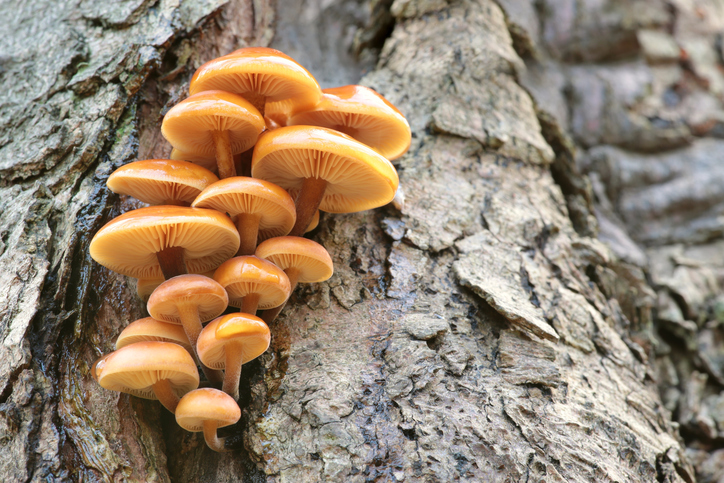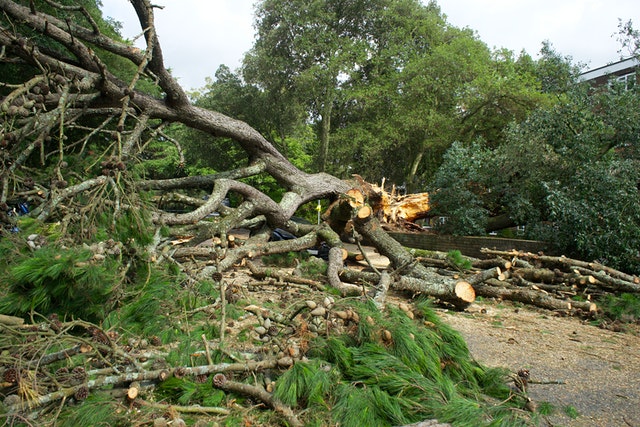Written by Arbor Day Foundation and published on https://arbordayblog.org/.
Tree removal is often necessary when a tree becomes too large for its location, poses a safety hazard, or is no longer healthy. In some cases, it may be possible to trim back a tree in order to mitigate the problem. However, there are also times when complete removal is the only option. For example, if a tree is leaning dangerously and/or has broken branches, it may need to be removed in order to prevent it from causing property damage or injuring people. Similarly, a tree that is considered “dead” or “hazardous” is also typically removed. Dead trees are often at risk of falling and can pose a serious safety hazard, while hazardous trees may have internal issues that make them dangerous to people and/or animals. Ultimately, tree removal is often necessary in order to maintain public safety.
Saying Goodbye: When it’s Time to Remove Your Tree

Trees bring so much benefit and beauty to the landscape, it can be hard to part with them. But, while a tree may seem healthy to the untrained eye, it could be a disaster waiting to happen.
Tree removal is usually a last resort, when no other safe management option, like pruning or disease mitigation, is sufficient. Dead, dying or otherwise hazardous trees can lead to thousands of dollars in damage, plus the priceless cost of personal injury. Often a tree doesn’t look dangerous until after a storm or heavy snow exposes its vulnerabilities.
As a tree owner, you are responsible for damage or injury that occurs because a tree that should have been removed was left standing. The good news is, you can often tell if a tree is struggling by studying its branches, trunk, roots, and location.
Here are some red flags to look for which indicate your tree should be inspected by a professional and possibly be removed.
It’s Time to Call an Arborist if…
There are signs of infection. Crown dieback, cracks (deep splits in the tree’s bark), misshapen or discolored leaves, soft crumbly wood, and the appearance of fungi may indicate your tree is infected. Other signs that may show the tree has unwanted pests include emergence holes, feeding galleries, and woodpeckers feeding heavily on the tree.
You see large, dead branches in the tree’s crown. These are sometimes referred to as widow-makers because they can fall for seemingly no reason and seriously injure those below. If 50 percent or more of the tree is dead or damaged, it should probably be removed for safety reasons.
Your tree isn’t growing well. Take a look at the health and vigor of your tree compared to the trees growing near it. Thin leaf cover, discolored foliage, and stunted growth are all signs your tree is having trouble. The reason may need to be diagnosed by a professional.
There is evidence of root defects. Root defects often are not easily noticeable, but heaving soil and fungi growing near the tree’s base are both signs of root issues.

The trunk is compromised. Cracks or splits, large wounds, and dead branch stubs on the tree’s trunk all indicate internal decay. Many people don’t realize trees can actually live for years with internal decay. Some trees can handle internal decay and remain standing for a while, but it’s just a matter of time before they eventually do fall. Trees with multiple trunks (also called “leaders”) can also end up with structural issues later on down the road.
The tree is hollow. A tree with a hollow trunk has been seriously compromised and is a hazard. If a third of the tree is rotted or hollow inside, it needs to be removed.
The tree is suddenly leaning. All leaning trees aren’t necessarily dangerous, but a tree that suddenly leans to one side may have structural problems.
You observe sprouts at the base of the tree. These are known as epicormic shoots and they indicate that the tree is severely stressed and should be evaluated by a professional.
The tree is under power lines. A tree that is growing into power lines can become a hazard and may need to be removed by a certified arborist or tree service.
The tree is too close to a house or other structure. Trees hanging over the roof or too close to a structure might need to be removed – or at least regularly pruned. In general, large trees should be at least 20 feet away from a house or building.

Dead or dying trees don’t always need to be removed, if they are located in a forested area or away from people and structures. These trees can serve as a home and refuge for woodpeckers and other wildlife.
While some tree failures are sudden and unpredictable, it’s good to know most can be prevented by proactive measures. Now is a good time to inspect trees, before the worst of summer’s storms and heavy winter snowfall. If you notice any of the above signs, contact a professional, as most tree removal jobs are unsafe for the average home or property owner.
Original post-https://arbordayblog.org/treecare/saying-goodbye-when-its-time-to-remove-your-tree/.


